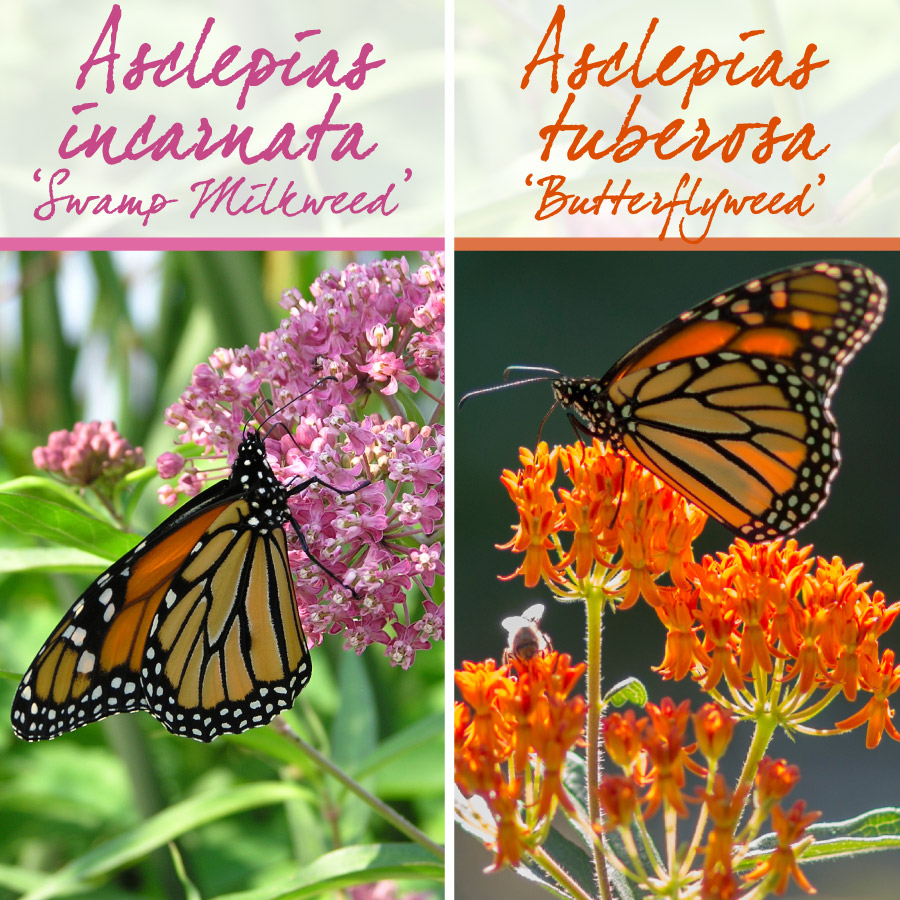I Help Put Food on Your Table
Perennial of the Week: Asclepias
Asclepias, known to most of us as Milkweed, is a vital part of the ecosystem. Without the various types of Asclepias, much of the food we eat every day could not be produced! This is no exaggeration: Asclepias is essential to the survival of the Monarch Butterfly and other important pollinators.
Monarch caterpillars depend on Asclepias leaves to fuel their journey toward becoming fully developed, migratory butterflies. The butterflies then continue the cycle, laying their eggs on Asclepias plants.
From early to mid-summer, Asclepias incarnata (Swamp Milkweed) produces clusters of sweetly perfumed pink flowers. Each rounded umbel includes multiple five-part flowers with elevated central crowns. The plants grow up to five feet tall in full sun or partial shade, and tolerate average to wet soil conditions. A. incarnata is often found growing near ponds and in other low-lying areas. Its specialized roots are adapted to thrive in low-oxygen conditions.
The “Ice Ballet” form of A. incarnata produces pure white flowers.
Poke Milkweed (A. exaltata) makes its home in full sun to partial shade, and grows well in average soil. This variety of Asclepias, which can be found growing at woodland edges, allows gardeners who do not have full sun to welcome a form of Milkweed into their yards.
Whorled Milkweed (A. verticillata) features fine foliage and nodding blooms. These plants are best enjoyed in mass plantings.
Rohsler’s is also your source for the hard-to-find A. purpurascens, the rare and lovely deep purple variety of Asclepias.
Common Milkweed (A. syriaca) blooms from May through July. This variety of Asclepias has a tendency to spread and is best planted in its own garden bed.
Butterfly Weed (A. tuberosa) prefers drier sites and does not care for very wet soil. Gardeners enjoy planting this form of Asclepias, which develops showy orange blossoms.
When Milkweed has finished flowering, it forms long seed pods that ultimately open to the reveal fluffy white spidery seed carriers that each transport one seed on the slightest wind. In years gone by, children called these “money catchers,” and would take hold of one, make a wish, and send the seed carrier off on the breeze.
Rohsler’s grows all of the aforementioned varieties of Asclepias from seed and all of these species are native in our area. In addition to being a fantastic pollinator plant and the host plant for the Monarch Butterfly, all types of Asclepias are deer resistant. Bring home the butterflies: Plant some Rohsler’s Grown vibrant and colorful Milkweed today.

